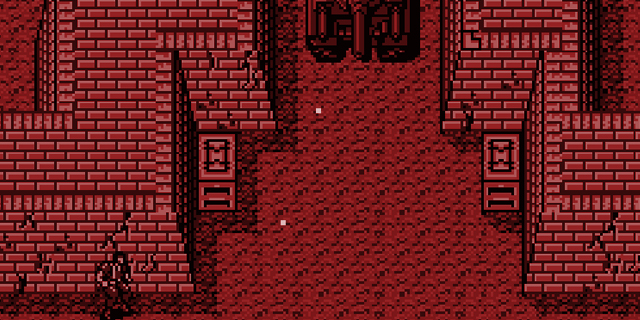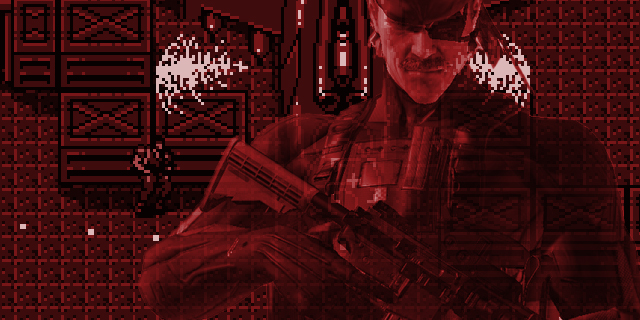
In From Pixels to Polygons, we examine classic game franchises that have survived the long transition from the 8- or 16-bit era to the current console generation.
The Metal Gear series has seen a lot of changes over its 26-year history, and yet it remains one of the most widely discussed and loved franchises in gaming. While the core fundamentals of the series (such as stealth) have remained more or less the same, the transformation from 8-bit MSX game to the current juggernaut it is today has been fascinating. And with the recent announcement of Metal Gear Solid V, it’s time to take a look at Hideo Kojima’s ever-growing series.
Solid Snake’s first missions

Metal Gear was a successful crapshoot, a product of circumstance that had to be changed to work with the limitations of its hardware. Hideo Kojima, in charge of game design, wanted to make a military-themed action game, but the MSX couldn’t handle enough enemies or bullets on screen at the same time, nor could the screen scroll automatically. As legend has it, Kojima saw “The Great Escape,” and changed the premise of the game after being inspired. The result was a unique experience that rewarded the player for avoiding enemies rather than seeking out combat.
If the first game can be considered the “groundwork” of what was to come, Metal Gear 2 could be considered the “framework.” Many of the mechanical additions to the game will feel familiar to fans of the series in its contemporary form. Snake could crawl to get into small spaces and avoid detection, make noise to throw enemies off his trail, and had a handy radar allowing the player to keep track of enemy position. (Even off-screen!) Enemies were also souped up with a larger cone of vision and the ability to turn their heads and look around, even when facing a different direction. Also of great importance: Metal Gear 2 had a much larger emphasis on the story, setting up a familiar tale of a nuclear power struggle, and defining characters that are now infamous. – Lucas White
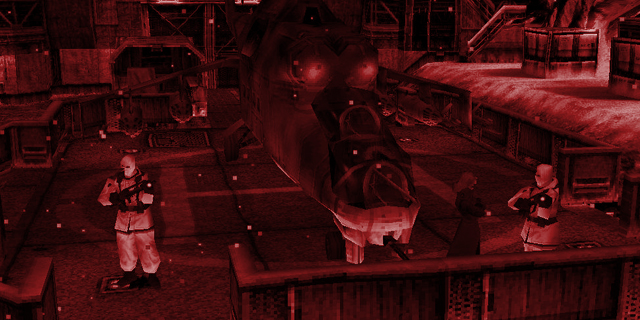
A stealthy 3D transition

Some retro game enthusiasts consider Metal Gear Solid to be an almost-remake of Metal Gear 2. Canonically, it is obviously a sequel, but it is quite similar structurally (though with the natural streamlining and accessibility that came with the 3D generation), and hits a lot of the same story beats. New technology allowed Snake much more mobility, but the basics were largely the same. What really made Metal Gear Solid was its theatricality. The brevity of the 8 and 16-bit eras was no longer needed, and long cutscenes were “in.” This is where Kojima really got his feet wet as a storyteller, and while he hadn’t quite come into his own in a lot of ways yet, the series adopted a new identity as a sort of homage and parody of James Bond films. Metal Gear Solid was also intentionally very silly, which is a bit at odds with a lot of the self-seriousness the sequels possessed. Not to say that the sequels aren’t without humor, of course!
Metal Gear Solid 2 didn’t make a ton of changes to the gameplay formula outside of the obvious generational upgrades, but Kojima made strides in his exploration of what video games could do with a cinematic narrative form. He also stirred up quite a controversy with his bait-and-switch, resulting in a new protagonist: Raiden. Very much the opposite of Snake, the roughneck monster of a man, Raiden was a newbie and kind of a pretty boy. He also allowed Kojima a blank slate with which to play, creating not only the most interesting and dynamic character in the series, but also expanding the Metal Gear universe and taking a huge turn towards the philosophical and metaphysical. Depending on your preference, this was an amazing shift or a turn-off, as Kojima’s focus on huge narrative world-building began to manifest itself in the form of enormous chunks of exposition. – Lucas White
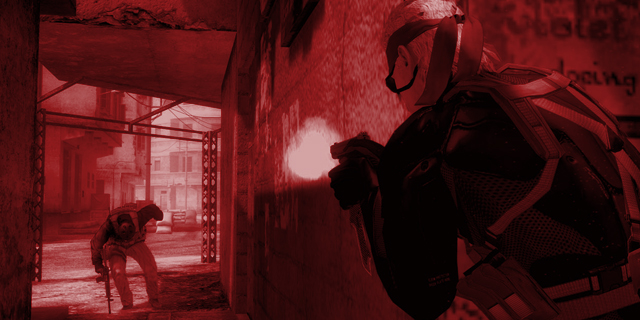
The recent assignments

After three amazing PlayStation iterations in the series, Kojima and company decided it was time to bring the series to the (then) next generation of consoles with Metal Gear Solid 4. The early trailers and demos of the game showcased its spectacular visuals and sense of scale, while also providing players with the notion that stealth wasn’t the only option. In some ways, this was always true, but MGS4 honed in on the idea of being a lone wolf in the middle of a battlefield, confronting with two sides of a seemingly never-ending conflict. No matter how you approached each section of the game’s lengthy campaign, you were left with a mechanically refined, exceptionally fun third-person action game that built upon the foundations of its predecessors with extraordinary results. Combine that with a story that somehow managed to tie up almost every loose end up to that point, and you’re left with another remarkable title in a long line of successes.
MGS4 also introduced Metal Gear Online, a competitive multiplayer component that took the improved mechanics from the single-player and made them work surprisingly well in a multiplayer setting. This wasn’t the first attempt at Metal Gear multiplayer, with the Subsistence version of MGS3 and Portable Ops on the PSP both offering online competitive and cooperative modes, but Metal Gear Online felt like the first real successful attempt at bringing the series into a multiplayer space. It worked surprisingly well, and felt just different enough from other, similar multiplayer offerings allowing it to stand out from in a very crowded market.
After swearing he would retire from the franchise for the second time, Kojima returned to head up the next game in the series, a PSP title named Peace Walker. While Portable Ops, the previous handheld MG offering, was middling at best, Peace Walker managed to improve upon all of the previous game’s shortcomings and turn out a game that felt more in line with the previous games in the series. While playing a game of this nature on a handheld with only one analog stick still proved to be a bit of a hassle, the game managed to give players bite-sized stealth missions and a story that continued to weave another complex web. Plus, the addition of co-op missions set it apart from previous online offerings, demonstrating yet another interesting way to experience Metal Gear. – Andrew Passafiume
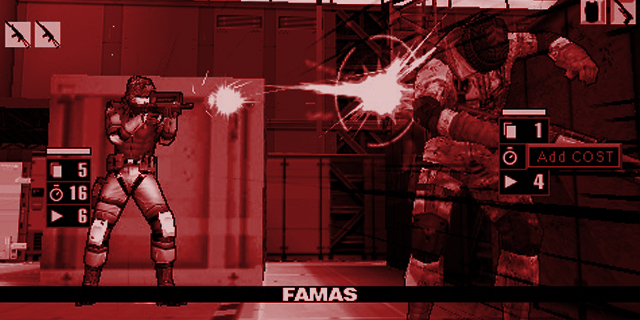
Solid spin-offs

The folks at Konami also tried their hand at creating an odd, PSP-exclusive turn-based strategy game in the Metal Gear series called Metal Gear Acid. Many fans were disappointed when they found out exactly what Acid was, but the odd combination of Metal Gear Solid and a card-based strategy game managed to win many people over. While its slow pace and bizarre story (even by the series’ standards) pushed many people away from the game, there was something refreshing about approaching this series with an entirely different set of mechanics. A sequel, Metal Gear Acid 2, was released not too long after the first game’s surprising success, but there hasn’t been mention of a return to this formula since.
On the complete opposite end of Acid’s turn-based nature, Kojima Productions began work on another spin-off starring Raiden. It would be an action game with a focus on slicing through objects and enemies with precise control. The project went nowhere and was eventually canceled, but a few meetings later, Metal Gear Rising: Revengeance was born again. This time, Platinum Games, the acclaimed studio behind Bayonetta and Vanquish, was at the helm. The game turned out better than expected, and demonstrated that straying from the formula was just what was necessary to freshen up the series in some exciting ways. – Andrew Passafiume
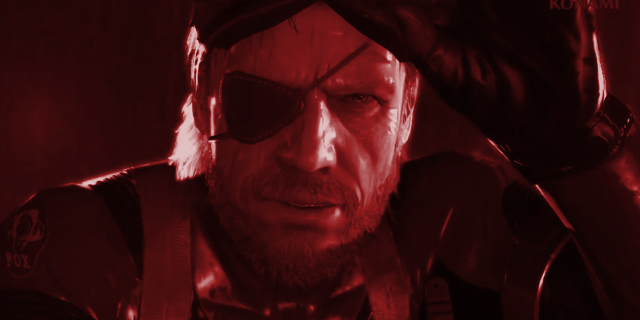
What’s the peak of the Metal Gear series?
 Andrew: This seems like an easy choice for me. The obvious answer would be Metal Gear Solid 4, a game I love (I mean, really love), but I don’t quite think that is the peak of the series. After seeing demos of Ground Zeroes and The Phantom Pain, I have faith that Kojima and his team are working on something that could be something special. The inevitability of these games running on next-gen hardware, the promise of an open-world, and two massive games that seem to further connect Big Boss’ story to the beginning of Solid Snake’s in a (hopefully) meaningful way all give me hope. It leads me to believe we have not yet reached the peak of the Metal Gear Solid series, but maybe with MGSV we just might.
Andrew: This seems like an easy choice for me. The obvious answer would be Metal Gear Solid 4, a game I love (I mean, really love), but I don’t quite think that is the peak of the series. After seeing demos of Ground Zeroes and The Phantom Pain, I have faith that Kojima and his team are working on something that could be something special. The inevitability of these games running on next-gen hardware, the promise of an open-world, and two massive games that seem to further connect Big Boss’ story to the beginning of Solid Snake’s in a (hopefully) meaningful way all give me hope. It leads me to believe we have not yet reached the peak of the Metal Gear Solid series, but maybe with MGSV we just might.
 Lucas: I am now going to ostracize myself as a weirdo and claim Metal Gear Solid: The Twin Snakes as my favorite entry in the series. It has everything I love about Metal Gear Solid: the endearingly cheeseball characters and dialogue, tightly structured game design and awesome music, while upgrading the graphics, recording clean new voice overs (sans casual racism!) and bringing in Kojima’s buddy (and one of my favorite movie directors) Ryuhei Kitamura to spice up the theatrics in a big way. Haters like to complain about how “ridiculous” it is, but after some of the dumb things that took place in the third and fourth MGS games, I feel like that argument has been indisputably invalidated. Plus, who cares? The cutscenes are awesome.
Lucas: I am now going to ostracize myself as a weirdo and claim Metal Gear Solid: The Twin Snakes as my favorite entry in the series. It has everything I love about Metal Gear Solid: the endearingly cheeseball characters and dialogue, tightly structured game design and awesome music, while upgrading the graphics, recording clean new voice overs (sans casual racism!) and bringing in Kojima’s buddy (and one of my favorite movie directors) Ryuhei Kitamura to spice up the theatrics in a big way. Haters like to complain about how “ridiculous” it is, but after some of the dumb things that took place in the third and fourth MGS games, I feel like that argument has been indisputably invalidated. Plus, who cares? The cutscenes are awesome.
In our next installment, we’ll look into Capcom’s storied fighting game franchise, Street Fighter.



